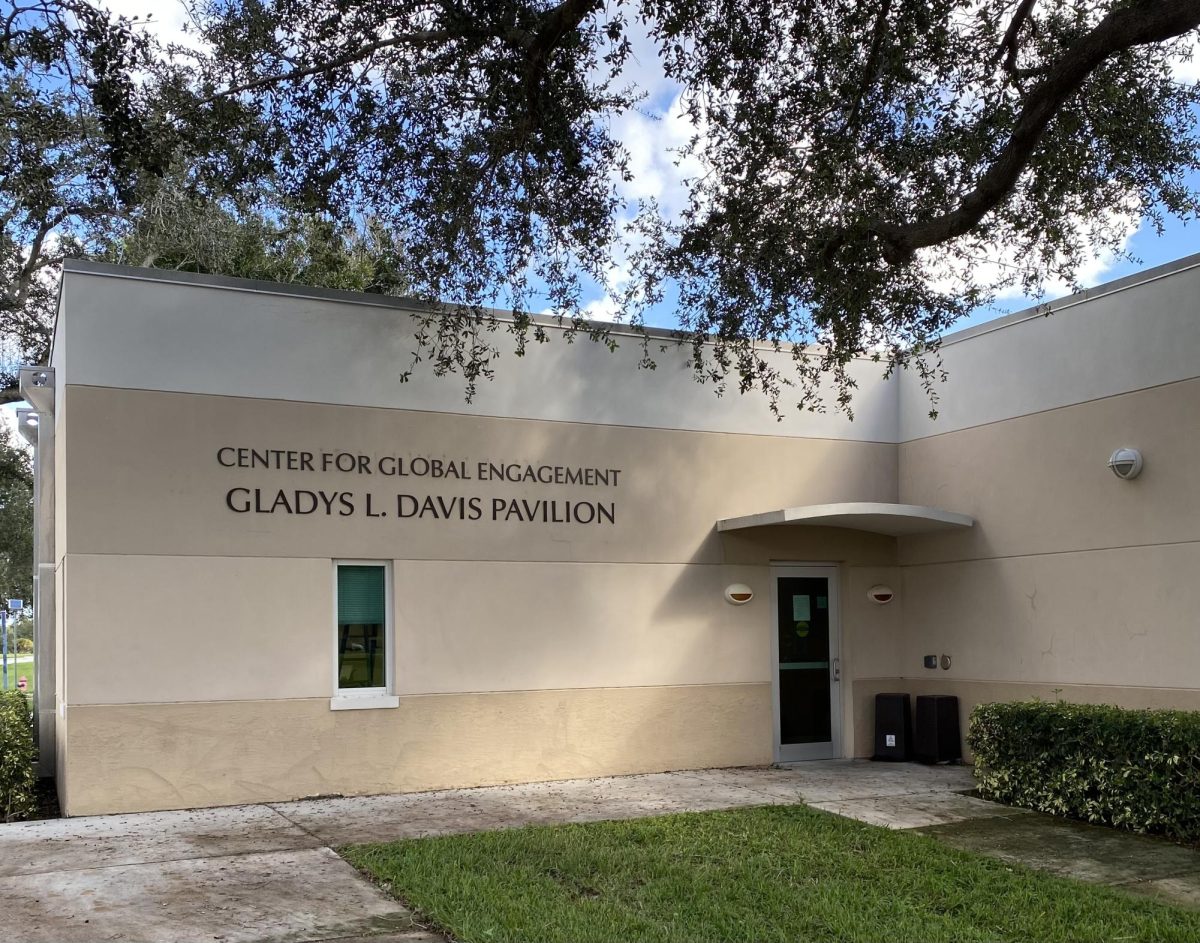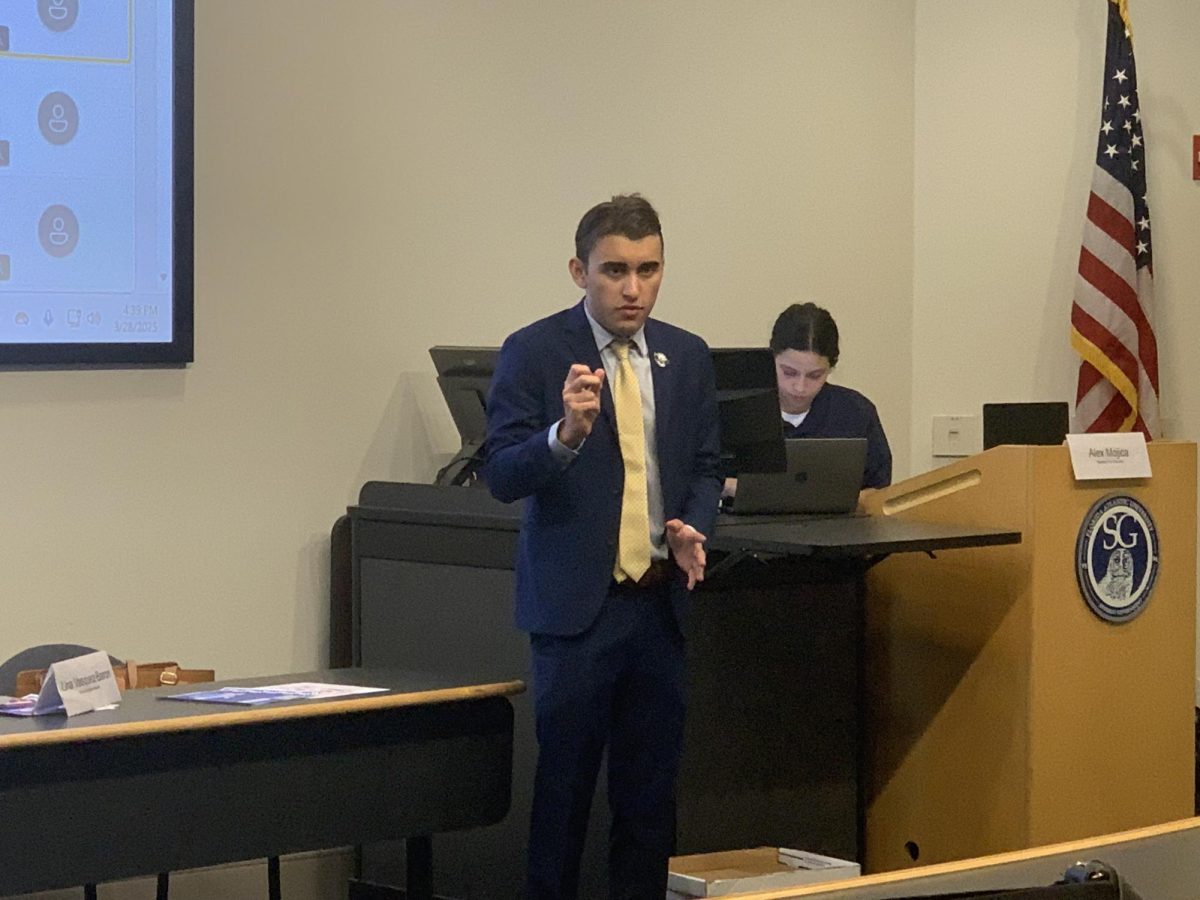While the student dorms at Florida Atlantic University are the first real homes Lowendy Smith has had, he continues to encounter difficulties — and he’s not alone. Multiple students gathered at FAU’s “Housing Insecurity in Paradise” photo gallery on Oct. 16 to see the reality of living on campus.
Smith, a junior exercise science major, has never known stability, as he grew up in the foster care system. After enduring abuse at the hands of his adoptive parents, he jumped at the chance to live in college dorms when they kicked him out at 18.
“I’m kind of on both ends of the spectrum, of foster care and homelessness,” he said. “It was my way of getting out, finding housing and an opportunity to change my life around.”
Smith currently lives in Innovation Village Apartments on the Boca Raton campus. FAU Housing put him on a waitlist during the summer, but he received housing for the 2024-2025 school year around mid-July.
“After reaching out to housing countless times, I was assured that I would likely receive housing,” he wrote in an email to the University Press.
Tylor Randley, a junior accounting major, had a different experience. The state considered him an unaccompanied youth after his mother died and he lost communication with his father.
FAU denied Randley housing, and he said it was difficult to afford rent off-campus. He currently lives with nearby relatives and commutes about 15 minutes to class.
Both of these students contributed photographs to the photo exhibit. Doctorate public administration student Matthew Patterson organized the gallery to break the stigma around homelessness.
As defined by the U.S. Department of Housing and Urban Development, the term housing insecurity “encompasses several dimensions of housing problems people may experience, including affordability, safety, quality, insecurity and loss of housing.”
In spring 2024, Patterson asked five students to meet and visually document their experiences with housing while attending FAU. Smith took the opportunity as a participant to show the raw truth of life in FAU’s residence halls, telling a story through candid images.
One photo shows his clothes stacked neatly on his dorm bed and ready to be packed into a suitcase. Another displays a paper plate and plastic utensils in an open microwave, calling attention to the lack of resources FAU provides during summer breaks while students still live on campus. Two other photos emphasize the instability of dorm life, which requires students to frequently move between different dorms at the end of each term.
Despite the exhibit surrounding housing insecurity, not all pieces on display showed resident halls or apartments. Randley took a more abstract approach with his photographs.
Underneath the descriptions of all the photos was a call to action. A QR code, located above the descriptions, allowed viewers to help the cause and provide resources for students. One photo Randley shot was a close-up of a magenta flower. He explained in the image description that he took the photo in a “rough neighborhood.”
“Even in bad situations, the flower still grows,” he wrote.
For this photo, Randley called for FAU’s on-campus mental health office, Counseling and Psychological Services, to provide students from nontraditional backgrounds with “unlimited mental health services.”
Patterson is a board member for the Boca Raton-based organization Champions Empowering Champions, whose mission is to be a helping hand for college students who have experienced foster care or homelessness.
He emphasized that housing insecurity is more common than most people realize.
“Housing insecurity could happen to anyone, and with the rising cost of living in Boca, it’s probably going to happen to more people, unfortunately. And we need to be able to engage people so that they know what to do, and they know that they’re comfortable to come and ask for help,” he said to the small crowd gathered under the Rotunda of the Social Science Building.
Patterson makes it his mission to shift society’s perspective of homelessness, as it’s something he has experienced firsthand.
“… Six years ago, I was homeless, and I was homeless for about 10 years, off and on, and I only was able to come to FAU because of the state homeless tuition waiver,” he said. “I lived in a housing program my first two years. And that’s what inspired me to want to do this research project.”
To both Smith and Randley, the photo project was very therapeutic because it helped them understand their situations from an outsider’s perspective.
“It kind of gave me a new point of view. You know, I was able to look at my environment and take a picture, and somehow relate that to some of my issues,” Smith said.
According to Patterson, FAU is miles ahead of other universities in supporting students struggling with housing insecurity. What lingers, however, is the stigma. So he hopes this event will “change the narrative.”
The most important thing Randley wants people to take away from this photo exhibit is that most people’s struggles are hidden in plain sight.
“When they look at a student or their peers or a child, does it ever cross their mind, like, ‘Who does that child belong to? Who are their parents? Where do they stay? What happens when they leave school? Where do they lay their head at night? Is there food in their kitchen?’” he asked. “We just assume that everybody is part of a nuclear family; that everybody has a home… and that’s not always the case.”
Elisabeth Gaffney is the Editor-at-Large for the University Press. For more information on this article or others, you can reach Elisabeth at elisabethgaffreports@gmail.com or DM her on Instagram @elisabethgaff.

















